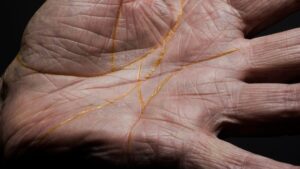Legacy Minerals’ 1,440g/t silver, 2.06g/t gold rock chips identify new Black Range prospects

Legacy Minerals’ rock chip sampling and ASTER work has reinforced the Black Range project’s prospectivity for large-scale gold-silver epithermal mineralisation. Pic: Getty Images
- Legacy Minerals rock chip sampling identifies new gold-silver prospects along a 30km strike at its Black Range project
- ASTER hyperspectral data has also highlighted extensive new areas within the project for follow-up
- At the Glenlogan copper-gold project, farm-in partner S2 Resources has started drilling for porphyry copper-gold mineralisation
Special Report: Legacy Minerals’ regional rock chip sampling returning assays of up to 1,440g/t silver and 2.06g/t gold has identified new gold-silver prospects along a 30km strike, highlighting the scale of mineralisation at its Black Range project.
The results highlight Mt Mylora, where the top silver rock chip assay was found, and Winooka Reef as areas for priority follow-up.
Highly encouraging results were also returned from ground-truthing of regional radiometric anomalies with rock chips returning assays of up to 0.46g/t gold and 47.8g/t silver.
Legacy Minerals (ASX:LGM) had only just kicked off exploration at its Black Hills project in April with a diamond drilling campaign, breaking a 30-year period of inactivity in the area with a drill program by Newcrest Mining at the Sugarbag Hill prospect in 1992 that failed to find any high-grade feeder zones being the last piece of activity.
Black Hills sits within SW’s premier Lachlan Fold Belt, a region known for its monster gold-copper mines such as Cadia Ridgeway, one of Australia’s top three largest gold producers.

New areas for follow-up
Besides the new prospects identified by the rock chip sampling, the company’s interpretation of ASTER (Advanced Spaceborne Thermal Emission) hyperspectral data has also highlighted extensive new areas within the project for follow-up.
This work identified 28 anomalies consistent with the signatures of low and intermediate sulphidation epithermal gold-silver mineral systems.
However, the diamond drill program that kicked off exploration and which sought to intersect epithermal style veins and alteration at the Sugarbag prospect failed to return any significant results.
LGM noted that while both holes had found evidence of a low-sulphidation style epithermal system, a decision was made to only complete two holes rather than the larger planned program to ensure that targeting of the potential feeder structures could be refined with the latest geological knowledge.
It added that Sugarbag Hill remained a priority target area with the source of the large 2.2km long trend in soil sampling of >20 parts per billion gold still to be confirmed.
“With the initial diamond drilling at the Sugarbag Hill prospect complete and assays recently returned, the team now moves to incorporate the new information into follow up targeting,” managing director Christopher Byrne said.
“This first-pass, deeper diamond drilling at the prospect has not defined the source of the strong gold-in-soil anomalism on surface. However, it has provided good geological evidence for the potential of the system further west that requires follow up work.
“The case for an economic gold-silver discovery on the Black Range Project is strengthened by the growing gold and silver anomalism across 30km of strike and the recent regional rock chip results that graded up to 1,440g/t Ag and 2.06g/t Au. These findings are particularly compelling as there is little to no drilling at any of these latest gold and silver anomalies. M
“Multiple ASTER, radiometric and magnetic anomalies remain to be field-checked that have very similar characteristics to those that returned up to 0.46g/t Au through this reconnaissance field work.”
He added that the ASTER results supported the company’s view that Black Range is highly prospective for large-scale gold-silver epithermal mineralisation and will focus on incorporating this data with its other geoscientific datasets to further define compelling targets for drill testing.
Other activity
Black Range isn’t the only project in the Lachlan Range that LGM has interests in.
Over at the Glenlogan copper-gold project, S2 Resources (ASX:S2R), which is earning up to 70% by spending $6m on exploration over five years, has kicked off a drill program to test for porphyry copper-gold mineralisation.
This will test the Shellback anomaly, which has clear analogues to the geological setting of the nearby Tier 1 Cadia District that hosts 33Moz of gold and 7.9Mt of copper.
It also boasts aeromagnetic signatures similar to those found at other globally significant porphyry deposits.
“The Glenlogan Project is located less than 55km from the giant Cadia Valley porphyry complex and it presents an exceptional opportunity to discover a major porphyry deposit. Glenlogan is a walk-up, Tier1 target, with potential for a large copper-gold porphyry discovery,” Byrne said.
“Using magnetics to target porphyry copper-gold deposits has resulted in the discovery of many great porphyry copper-gold systems, including the nearby Cadia East deposit in 1994.
“We are delighted to have the drill bit spinning with S2 Resources, a highly regarded exploration company with an exceptional track record of delivering shareholder value through mineral discovery.
“S2 is supported by some of the mining industry’s pre-eminent technical and investment experts and has the expertise and experience to secure the funding and resources required to advance quality mineral projects all the way from discovery through to production.”
Next steps
LGM is awaiting results at the end of August for a soil program completed over the Mt Mylora prospect.
This is expected to l inform potential follow-up exploration, which may include ground geophysics prior to drill testing.
Ground-truthing will also aim to follow up newly identified regional gold-silver anomalies.
This article was developed in collaboration with Legacy Minerals, a Stockhead advertiser at the time of publishing.
This article does not constitute financial product advice. You should consider obtaining independent advice before making any financial decisions.

UNLOCK INSIGHTS
Discover the untold stories of emerging ASX stocks.
Daily news and expert analysis, it's free to subscribe.
By proceeding, you confirm you understand that we handle personal information in accordance with our Privacy Policy.








